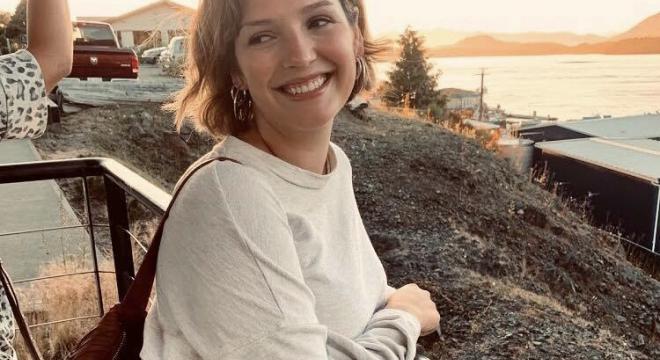September 29, 2021
My name is Caitlin Hanley. I’m a Métis woman descended from the Peguis First Nation and Moose Cree First Nation in Manitoba. And I’m honoured to be able to speak a little bit on Canada’s first National Day for Truth and Reconciliation and my hopes for the day.
September 30th, 2021, marks Canada’s first National Day for Truth and Reconciliation, which coincides this year with Orange Shirt Day. This is a day dedicated to remembering and honouring the lost children and survivors of residential schools, as well as to acknowledge the long lasting and present painful legacy these schools left on descendants and communities.
This is a day that has been a long time coming – though that’s not to say that residential schools should be considered an artifact of our nation’s past. Canada’s last residential school in closed in 1996.
The direct and intergenerational traumas resulting from these schools are endemic in families and communities across North America. This is an issue that has deep and ancient roots but is still very much alive.
That’s why I like to think of September 30 as a day not only for reflection, but for action. The creation of the National Day for Truth and Reconciliation is a direct answer to Call to Action 80 in the Truth and Reconciliation Commission of Canada’s: Calls to Action report. There are 93 other calls to action in that report alone. Many of them relate to present day issues that our Indigenous communities are facing, including subjects as wide-ranging as child welfare, health, equity for Indigenous people in the justice system, and more.
It’s my sincerest wish that my peers take the time to read the Truth and Reconciliation Commission of Canada’s: Calls to Action report this year.
It’s an excellent starting point to understand the actions that our federal government should take to advance reconciliation and contribute to healing our nation.
After that, I hope that my peers take the time to learn about First Nations, Métis and Inuit history beyond the horrific legacy of residential schools.
We are known for much, much more than our trauma. Indigenous culture is beautiful and vibrant and underpins so much of what we understand as Canadian culture.
Learn the original names of the cities where you live. Learn the names of the peoples who lived there first. Learn some of their traditional stories. Follow Indigenous content creators – I personally follow Theland Kicknosway (@the_landk), James Jones (@notoriouscree), Sina Nova (@shinanova), Nikita Elyse (@nikitaelyse) and Conway Kootenay (@conwaykootenay) on Instagram. Read books from Indigenous authors – a few of my favourites include Halfbreed by Maria Campbell, The Inconvenient Indian by Thomas King, The Reason You Walk and Go Show the World by Wab Kinew and They Came for the Children: Canada, Aboriginal Peoples, and Residential Schools by Truth and Reconciliation Commission of Canada. Listen to Indigenous musicians and support and pay Indigenous artists if you want to buy Indigenous art. I also am trying this year to support Indigenous makeup companies and fashion – personally, I like Cheekbone Beauty, Rez Gal Lashes, B.Yellowtail and Ginew. If you have questions, there are countless resources available online to help you. It is important to not place the burden of education on your Indigenous friends and peers.
Finally, if you’re moved by what you learn, take personal action by calling upon the federal government to address the Truth and Reconciliation Commission’s 94 Calls to Action. I hope that you call upon your government and call upon yourself this September 30.
Caitlin Hanley is a Cause Engagement Specialist at Benevity, Métis woman and active participant in Benevity's Reconcili-Action Employee Resource Group that regularly shares and showcases influential Indigenous content and people.

